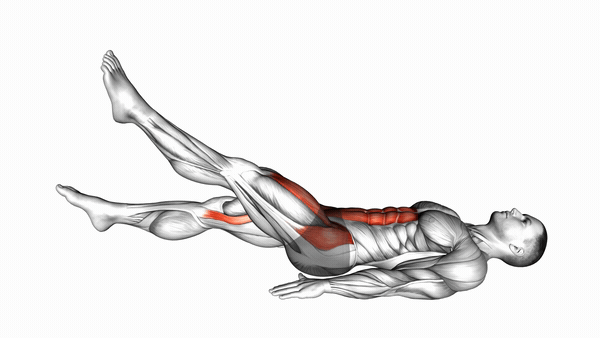To perform Flutter Kicks, you will need no equipment, making it easily accessible for everyone.
Flutter Kicks primarily target the following muscle groups:
- Primary Muscle: Rectus Abdominis
- Secondary Muscle: Hip Flexors
Flutter Kicks are a popular exercise for targeting the core, particularly the lower abs and hip flexors. However, there are several variations that can enhance your workout routine while still focusing on similar muscle groups and movement patterns. Here are a few variations to consider:
-
Cocoons: This exercise involves curling your body into a 'C' shape, which targets the lower abs while also engaging the upper body. The cocoon movement adds an element of dynamic motion that can further challenge your core stability. You can learn more about Cocoons here.
-
Oblique Crunches: This variation focuses on the oblique muscles, enhancing core strength and stability. By twisting your torso as you lift, you engage the side muscles of your abdomen, which can lead to a more balanced core workout. Check out how to perform Oblique Crunches here.
-
Alternate Heel Touchers: This exercise emphasizes the obliques and helps improve flexibility and stability. By reaching for your heels while lying on your back, you engage your core in a controlled manner, making it a great complement to Flutter Kicks. You can find more details on Alternate Heel Touchers here.
Each of these variations offers unique benefits and can help you develop a stronger core. Try them out and see which one works best for you!
In summary, Flutter Kicks are an excellent addition to any workout routine aimed at enhancing core strength and improving flexibility. By mastering this exercise, you can efficiently work on lower abdominal strength while avoiding common pitfalls. Start incorporating Flutter Kicks today to elevate your fitness game!
Load More










